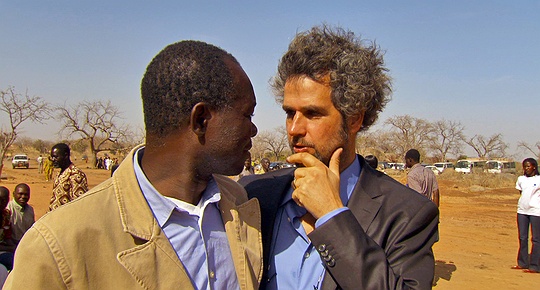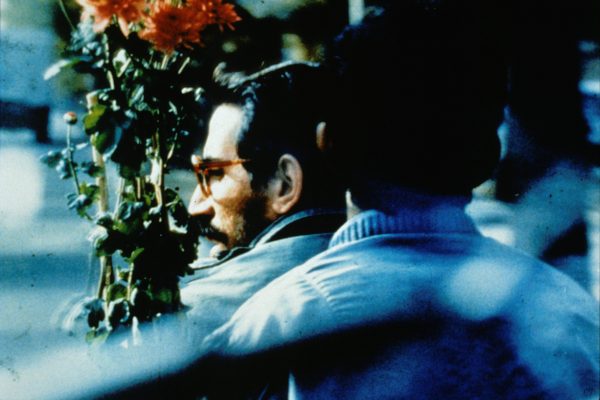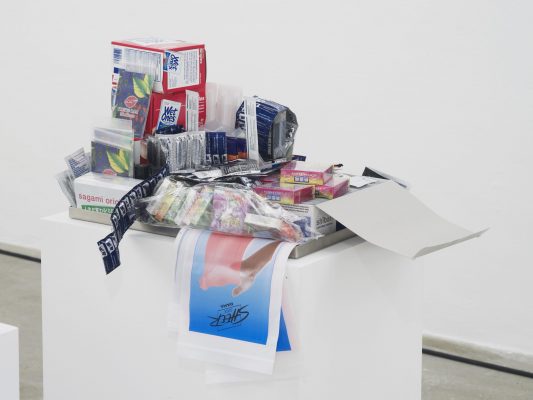I think the Opera Village. . . will lead to a new idea of art, and what will emerge will at some point also raise interest in tourism in Burkina Faso. The school will be our centre, educating children from Burkina Faso for whom it will open up wholly new possibilities. And who will let us share in their works! It will be a festival for everyone all over this world when we see how children from Burkina Faso develop their own images, learn the music of their country, build musical instruments, start bands, record music, shoot films. (Christoph Schlingensief, 8 February 2010)
Christoph Schlingensief was a celebrity in Germany, as famous as a pop star before his premature death in 2010 at the age of 49. During his short life he shot films, directed theatre, staged operas, created installations, invented performances and initiated political actions. His final and as-yet unfinished project, the Opera Village Africa, has been described as a Gesamtkunstwerk, a total work of art, and the climax of his career. The project seeks to create an artistic centre in one of the poorest countries in the world, an institution that will include a school, an opera house and a clinic. The village, which includes in its mission statement the aim to ‘overcome the division between art and life’, elicits questions about the status of the artwork and the role of the artist in the twenty-first century.
Despite his domestic notoriety, Schlingensief’s international reputation was slow to develop before he was posthumously awarded the Golden Lion for work exhibited in the German Pavilion at the Venice Biennale in 2011. Born in 1960 in Oberhausen, a small town in the Ruhr Area, Schlingensief started making films at the age of 8. He released his first long film TUNGUSKA—The Crates are Here! in 1986. The plot of TUNGUSKA, which combines the aesthetics of a Czech folk tale with eerie surrealism, is described as follows by Australian Cinematheque: ‘Three researchers travel to the North Pole to torture Eskimos with their avant-garde films.’ The summary gives some idea of Schlingensief’s perpetual opposition to the norms of narrative, as well as his obtuse means of critiquing the traditional aesthetics of radical film-making.
He followed this with another 16mm film entitled EGOMANIA—Island without Hope, starring Tilda Swinton. While the film’s melodrama and misery recalls a Baltic version of Werner Herzog’s Cobra Verde, its visually seductive style is evidence of Schlingensief’s talent as a pure filmmaker. In contrast to these fantastical films, Schlingensief’s subsequent films would address Germany’s Nazi past – Menu Total (1986) and 100 Years of Adolf Hitler—The Last Hour in the Führerbunker (1989) – as well as the reunification of Germany in the historical drama-cum-splatter film The German Chainsaw Massacre (1990).
Having gained a reputation for his films, Schlingensief was invited by dramaturge Matthias Lilienthal to direct at Berlin’s experimental theatre the Volksbuhne. His plays included Art and Vegetables, A. Hipler, and ATTA ATTA, and often incorporated film sequences into the production. His controversial version of Hamlet used amateur actors – skinhead members of German neo-Nazi organisations. The artist himself would on occasion appear on stage, megaphone in hand, to make himself heard above the mele e of crowds whipped into vocal participation by the chaotic, frequently inflammatory productions.
Schlingensief soon became bored with theatre and looked to take his work into the street, leading to diverse social and political performances. Chancellor Helmut Kohl, the head of the onservative Christian Democratic Union, was among Schlingensief’s favourite targets. The artist was arrested during an art performance at documenta X in which he advertised a poster bearing the motto ‘Kill Helmut Kohl!’ Another action targeting Kohl was staged at Austria’s Lake Wolfgang when Schlingensief invited the entirety of Germany’s unemployed population to join him for a swim, intending that the combined volume of the jobless bathers would cause the lake to overflow and flood Kohl’s holiday home.
The Wagner family’s invitation to stage Parsifal at Bayreuth in 2004 would change Schlingensief’s life. He would later repeatedly claim that the traumatic experience was to blame for the onset of the cancer that killed him. The offer was extended by Wolfgang Wagner, a grandson of the composer and general director of the festival who took a surprising turn in his later years towards the iconoclastic: Lars von Trier and the famously unconventional Swiss director Christoph Marthaler were among those also brought in to stage productions at Bayreuth at the beginning of this century.
Schlingensief was, perhaps unsurprisingly, heavily criticised by the opera establishment for his innovative and immensely creative interpretation (he succeeded in screening film for the first time during an opera performance in Bayreuth). Yet his encounter with Wagner would exert enormous influence over his later projects. His disappointment over the conservatism of the medium’s treatment seems to have contributed to the idea to found his own Opera Village.
To fully understand Schlingensief’s reasons for founding Opera Village Africa, one needs to appreciate his intensely democratic approach to the arts, as well as his taste for a challenge (it’s worth noting that the artist’s second production of a Wagner opera – The Flying Dutchman – took place at the opera house in the Brazilian city of Manaus immortalised by Werner Herzog’s Fitzcarraldo). His work requires the participation of the spectator, who is responsible for ‘activating’ the artwork. Schlingensief would go to any length to encourage, even force his audience to react actively rather than passively to the piece presented to them. This participatory practice, already part of Schlingensief’s performances, political actions and plays, is a key element in the development of the Animatograph.
‘Animatograph’ is a neologism combining the Latin term for soul, anima, with the Greek verb for writing, graphein. It might loosely be translated as ‘soulwriter’, and derives from the rotating stage Schlingensief developed for Parsifal in Bayreuth. His original idea was to realise on screen the phenomenon by which every scene from Parsifal’s life passed before his eyes at the moment of death. A rotating stage would serve to make the flow of images possible.
The Animatograph develops the idea by presenting a number of images, around and among which the audience is compelled to walk. The key aspect is that participation is integral to the experience, which is in each case particular to the individual. The visitor is literally surrounded by the work, with the screens projecting a series of scenarios that are less part of a comprehensible story than a series of recollections or associations that the viewer must assemble and organise. Schlingensief toured the Animatograph around countries including Iceland and, in 2005, Namibia, where he constructed his rotating stage in the slums of the former German colonial town of Luderitz and shot a never-finished film about colonial guilt and 9/11. That chaotic shoot is recorded in the film The African Twin Towers.




